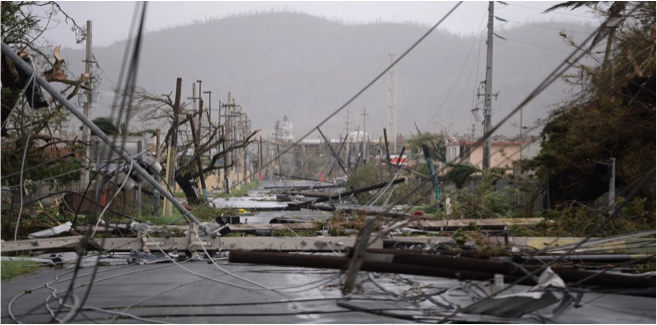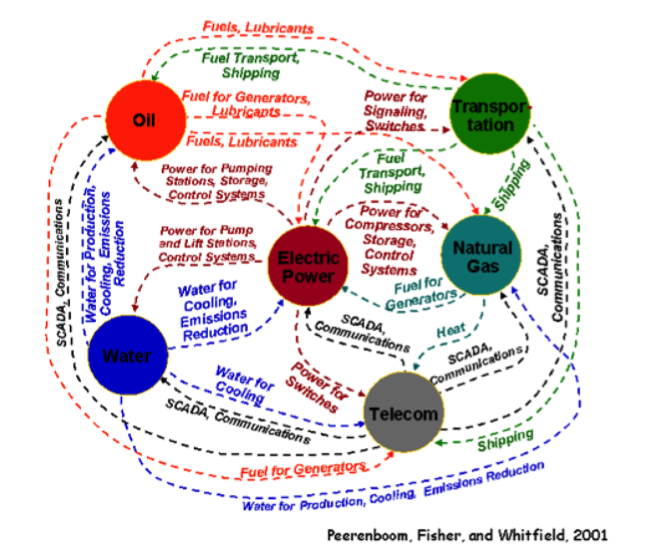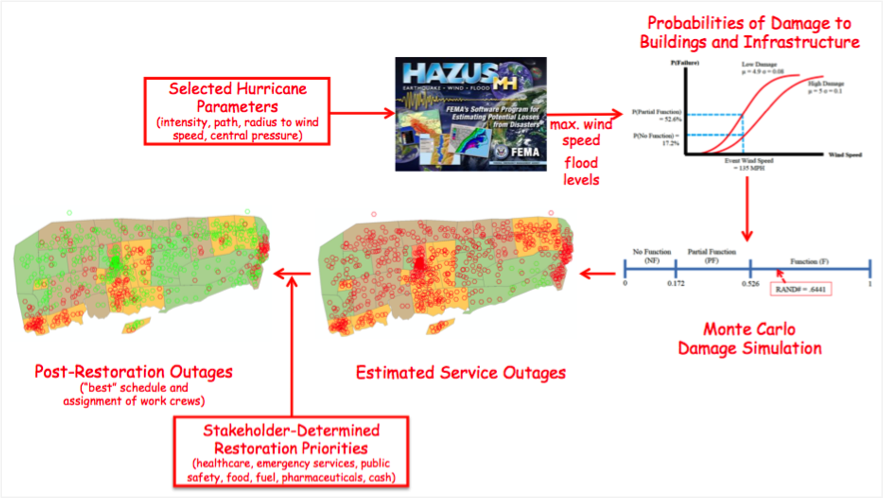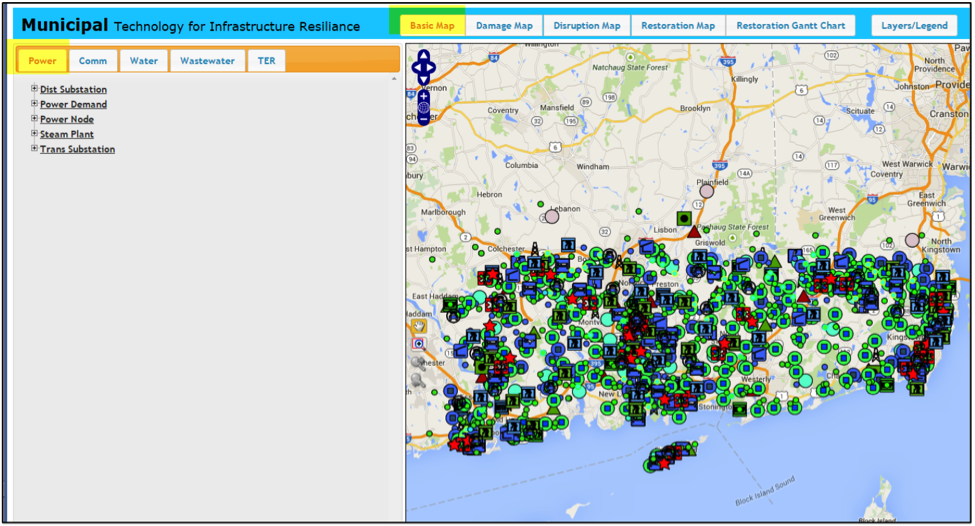MUNICIPAL (Multi-Network Interdependent Critical Infrastructure Program for the Analysis of Lifeline) is a leading edge decision support tool that provides users with a means to simulate the effects of extreme weather events on critical infrastructure, visually assess damage to these systems and the resultant service outages following events of varying intensity, and evaluate the outcomes of alternative preparedness, restoration, and recovery decisions. Originally developed by Rensselaer Polytechnic Institute (RPI), MUNICIPAL can be used to support the broad range of stakeholders involved in the protection, recovery, and restoration of critical civil and social infrastructures (CCSI) damaged by an extreme weather event, such as a hurricane.
MUNICIPAL

Why MUNICIPAL is Needed
- Extreme events are rare
- Infrastructure recovery and restoration are complicated. These phases involve many actors from many sectors with organizational and cultural differences who don’t normally work together.
- Drills and exercises can foster teamwork but are expensive and time consuming
- Disasters morph rapidly and demand improvisation
- Difficult to structure exercises so they capture the multiplicity of possible paths that disasters can take
Benefits
- Predicts damage to infrastructure during a specified natural disaster and produces an optimal restoration plan
- Considers “what if” scenarios to determine consequences of alternative courses of actions
- Enables stakeholders from multiple sectors to cooperate quickly and efficiently
- Eliminates the need to conduct expensive and time consuming disaster recovery drills and exercises
Critical Civil and Social Infrastructures (CCSI)
Civil infrastructures such as power, water, and communications are crucial for the quality of life and safety of a community. In addition, social infrastructures such as emergency response, banking, fuel distribution, and medical services play an important role in communities. Interdependencies between these infrastructure components must also be considered. After an extreme event, these infrastructures can face significant damage and cause a community to be faced with life threatening conditions. The rapid and efficient restoration of the services provided by infrastructures can improve a community’s resilience.

Civil Infrastructure Systems
Require little human involvement. Role of individuals are primarily for maintenance, control and repair.
- Transportation
- Power
- Communications
- Water
- Waste Water
Social Infrastructure Systems
Depend on human operators for delivery of services.
- EMS / Police / Firefighters
- Education
- Healthcare
- Food
- Fuel
- Banking
- Pharmaceuticals
Software Components
MUNICIPAL uses a vulnerability simulator, to predict damage to infrastructure components caused by extreme weather events of varying intensity. Inputs into the simulator include intensity path, radius to wind speed, and central pressure, which are used to calculate maximum wind speeds and flood levels to the affected region. The simulator is based on the Federal Emergency Management Agency’s (FEMA) Hazus software, a nationally applicable standardized methodology that estimates potential losses from earthquakes, hurricane winds, floods, and tsunamis. The tool then determines outages due to the damage while considering infrastructure redundancies. Then tool’s solver then evokes an optimization model that produces an optimal restoration plan/schedule based on available work crews and restoration priorities.


